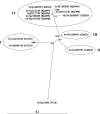Characterization of a Canadian mink H3N2 influenza A virus isolate genetically related to triple reassortant swine influenza virus
- PMID: 19116358
- PMCID: PMC2650907
- DOI: 10.1128/JCM.01228-08
Characterization of a Canadian mink H3N2 influenza A virus isolate genetically related to triple reassortant swine influenza virus
Abstract
In 2007, an H3N2 influenza A virus was isolated from Canadian mink. This virus was found to be phylogenetically related to a triple reassortant influenza virus which emerged in Canadian swine in 2005, but it is antigenically distinct. The transmission of the virus from swine to mink seems to have occurred following the feeding of animals with a ration composed of uncooked meat by-products of swine obtained from slaughterhouse facilities. Serological analyses suggest that the mink influenza virus does not circulate in the swine population. Presently, the prevalence of influenza virus in Canadian farmed and wild mink populations is unknown. The natural occurrence of influenza virus infection in mink with the presence of clinical signs is a rare event that deserves to be reported.
Figures


References
-
- Bikour, M. H., E. H. Frost, S. Deslandes, B. Talbot, J. M. Weber, and Y. Elazhary. 1995. Recent H3N2 swine influenza virus with haemagglutinin and nucleoprotein genes similar to 1975 human strains. J. Gen. Virol. 76697-703. - PubMed
-
- Choi, Y. K., S. M. Goyal, S. W. Kang, M. W. Farnham, and H. S. Joo. 2002. Detection and subtyping of swine influenza H1N1, H1N2 and H3N2 viruses in clinical samples using two multiplex RT-PCR assays. J. Virol. Methods 10253-59. - PubMed
-
- Dea, S., R. Bilodeau, R. Sauvageau, C. Montpetit, and G. P. Martineau. 1992. Antigenic variant of swine influenza virus causing proliferative and necrotizing pneumonia in pigs. J. Vet. Diagn. Investig. 4380-392. - PubMed
-
- Englund, L. 2000. Studies on influenza viruses H10N4 and H10N7 of avian origin in mink. Vet. Microbiol. 74101-107. - PubMed
Publication types
MeSH terms
Substances
Associated data
- Actions
- Actions
- Actions
- Actions
LinkOut - more resources
Full Text Sources

